When did QHD + resolution become such an option hidden on smartphones?
- Tram Ho
Display technology is one of the essential platforms that determines the quality of a smartphone today, especially on high-end smartphones. After all, our daily operations are interacting with the screen of the device. Therefore, the quality of the screen is one of the factors that smartphone manufacturers put on top.
Although at the present time, the race for screen resolution is no longer a popular trend of the year as before, but WQHD + (Wide Quad High Definition) resolution, also known as 2K + ( In fact, 2.5K and 3K) are still considered as one of the must-have standards on high-end smartphones today. Even with Sony, it also brings a 4K screen to the Xperia smartphone.
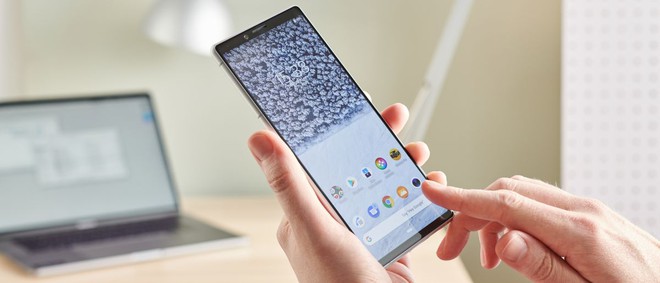
Sony Xperia 1 is a rare smartphone on the market equipped with a 4K screen
However, despite the popularity of high-resolution displays, a large number of high-end smartphones today leave the default resolution setting as Full HD + (approximately 2400 x 1080 and depending on the aspect ratio). Figure). That’s right, you didn’t hear wrong, users spend a lot of money to own high-end smartphones with sharp screens, but if you do not know how to set up, you will not be able to use all the “functions” of the screen QHD + image (approx. 3200 x 1440).
QHD is no longer important in 2020
Samsung is one of the first smartphone manufacturers to apply this method on the Galaxy S series, i.e., the default resolution setting is Full HD +. For example, Galaxy S20 Ultra, although its screen has a resolution of 3200 x 1440, but it is only set to display in Full HD + only.

By default, the S20 Ultra will only display in Full HD + resolution like this
Not only Samsung, a number of other manufacturers also follow this “trend”, such as Huawei, OnePlus or LG … All are default for users to use Full HD + resolution if not adjusted begin again.
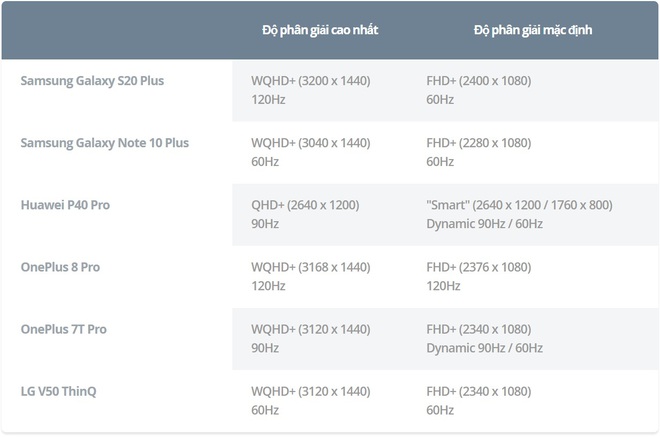
For example, some smartphones have high-resolution screens but the manufacturer has set the default display at a lower level.
The reason behind this quirky “trend” is battery life. As we all know, battery technology is one of the least developed technologies on a smartphone. In order to increase battery life, manufacturers have no choice but to increase battery capacity and reduce charging time (fast charging). Even with smartphones with a large battery capacity of 5000mAh like the Galaxy S20 Ultra, carrying too much technology and features will still be a “nightmare” for any battery.
This “nightmare” is becoming more “catastrophic” as the trend of high frequency screen scanning and 5G mobile network technology becomes common. In order to meet the standard battery life of users, now the solution that can be considered as the only solution besides increasing the battery capacity is to set the device to use the default only in Full HD + resolution. . Using a smartphone at QHD + resolution plus a high refresh rate may consume more power than you think. That is also why the iPhone 11 with a much lower HD + screen is one of the smartphones rated as having the highest battery life on the market.
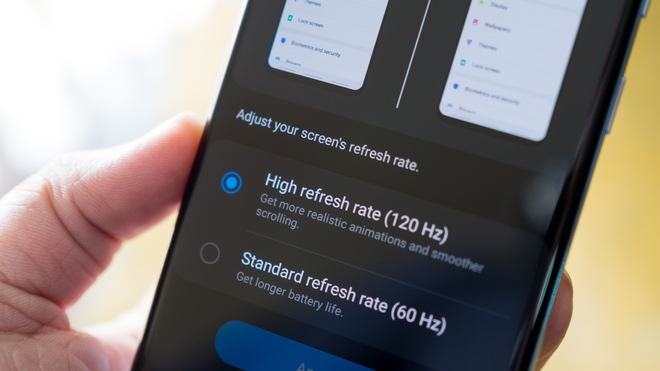
High-end smartphones today will be indispensable for a screen with a high refresh rate
While users can still set themselves to a higher resolution to use up the machine’s capacity, but what they trade off will be about battery life, which no other manufacturer. dare to commit once the user “goes back” to what was initially set to default. In fact, the majority of ordinary users will not spend time “rummaging through” Machine settings to change what has been set up.
Not to mention, in the past, we have a series of high-end smartphones launched without QHD + screen, instead of a traditional Full HD + screen, such as LG V60. , LG Velvet, Xiaomi Mi 10 or even the standard Galaxy Note10 … Obviously, today’s QHD / QHD + screen resolution is no longer an important factor for smartphone manufacturers compared to a few years ago. .
Why is Full HD + more popular among manufacturers?
As mentioned above, Samsung is one of the pioneering manufacturers in deciding to stick with the default Full HD + resolution to provide a better battery life for smartphones. Samsung lets users decide whether they should trade the battery life for a slight improvement in display quality. And because it’s a user’s decision, other manufacturers aren’t afraid to do the same.
One thing that users need to keep in mind is the limitation of the human eye. Not every higher resolution screen the more we feel better. At the distance the most common smartphone is used, it is difficult for the human eye to distinguish discrete pixels when the screen has a pixel density greater than 300 ppi. For smartphones with today’s Full HD + resolution, even on 6-inch screens, the pixel density is well above 400 ppi and declines as the screen size increases.
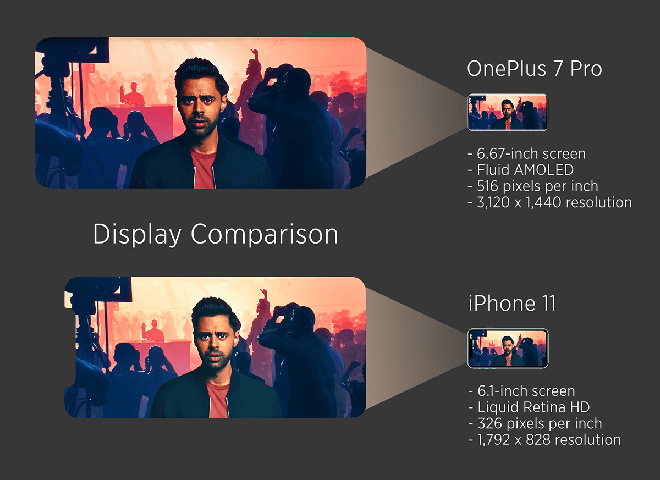
At a pixel density above 300 ppi and with normal smartphone usage, it is difficult for the human eye to distinguish discrete pixels.
At the 6.7-inch size of the Xiaomi Mi 10 and the Full HD + resolution, this density is also above 380 ppi, it is difficult for the naked eye to be able to distinguish each pixel, even for those with super vision. good.
So the fact that manufacturers equip smartphones with a high-resolution screen is not necessarily a good move if they do not solve the problems of battery life and associated technologies (frequency high scan numbers, 5G, … technologies that consume a lot of energy).
Balancing between screen refresh rate and new resolution is essential
QHD / QHD + or WQHD + resolution has proved its ineffectiveness in daily use. They consume more battery power to provide a slightly better experience, and are even harder to distinguish.
At a time when “home is 90Hz, people 120Hz”, the new battery life is the factor that manufacturers need to put on top. While the high refresh rate can be easily distinguished from the standard 60Hz frequency, manufacturers need to balance the screen resolution with the machine’s scan frequency to provide a better experience. but it doesn’t take too much battery. After all, screen resolution is just a factor not too important in the experience of using the screen, and most will expect a smartphone with a battery life to meet 1 day of use.
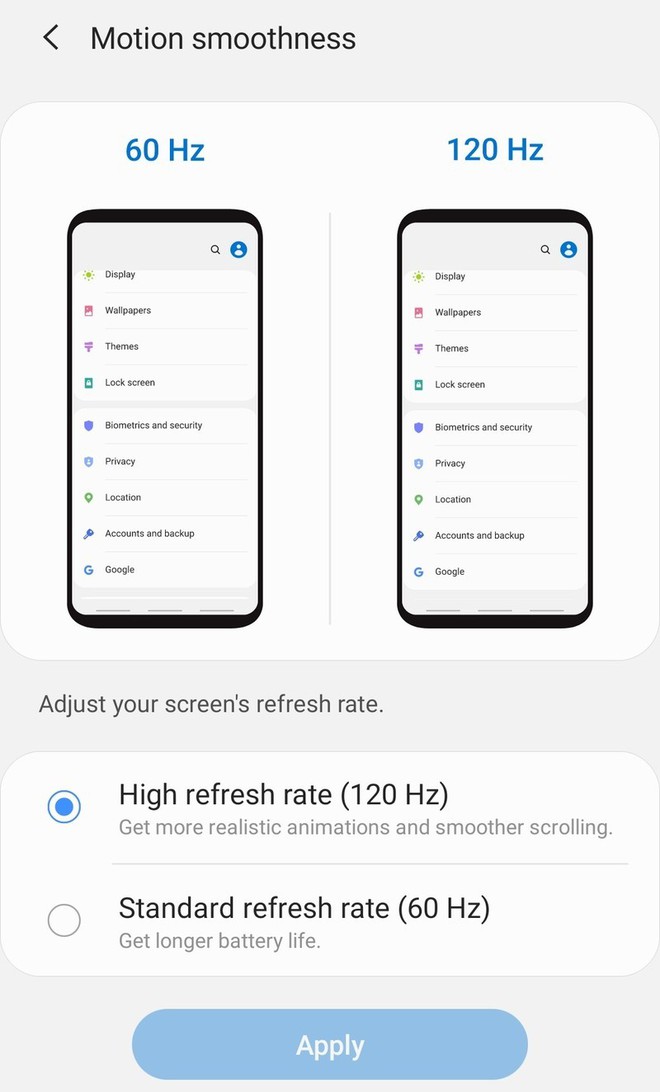
Smartphones with high-frequency scan screens are preferred
According to a survey by the Android Authority about whether Quad HD displays are really necessary for smartphones today, among 3141 votes, nearly 40% of users chose only smartphones with Full HD screen. , nearly 40% said that they would choose Full HD, but still wanted the Quad HD option in the settings. The rest want Quad HD and 4K screens on smartphones for only 15% and 9.8% respectively.

Survey of Android Authority page with 3141 votes
Much of the current media content is shared in Full HD
Equally important in determining the fate of QHD resolution is that most media sharing platforms are limited to Full HD resolution, like Netflix (if you’re watching on smartphones with Widevine L1 certification will be able to watch up to Full HD) or YouTube (most videos still play only in Full HD) …
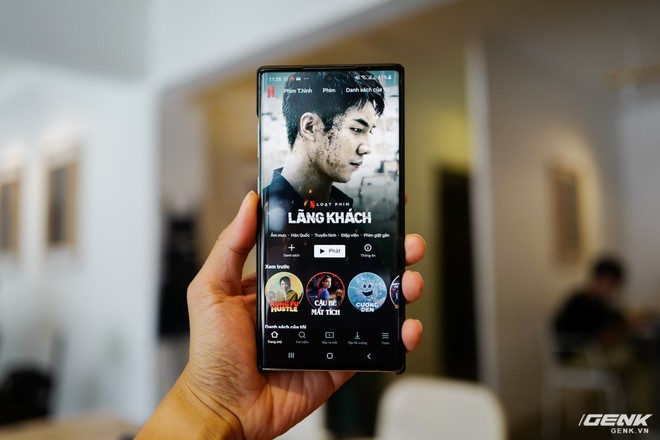
Regardless of whether your smartphone has a 4K screen, Netflix for phones will only stream in up to 1080p quality (even when signing up for a 4K UHD package).
Upscale Full HD content for viewing on a 1440p (QHD) screen can make quality worse, while consuming more power for the CPU to handle. That’s because in order to upscale a 1080p content to 1440p, the CPU will need to process each pixel at 1.3x, thereby making the pixels less sharp due to rounding. Meanwhile, upscale 1080p content to 4K is easier because each pixel only needs to be raised 4 times (4x), making content look sharp when displayed on 4K screens.
Isn’t it better to “kill” QHD + resolution?
We already see the huge potential for QHD + resolution on smartphones, so why not manufacturers remove this resolution as well? Just to reduce product costs, both help increase battery life of smartphones.
Things are not so simple. Any smartphone brand that launches a new product, especially a flagship, will announce top-of-the-line specs on the market. That is also the reason why announcing a high-end smartphone at an unbelievably high price, but having only a Full HD + screen will be a laughable thing for any technology user.
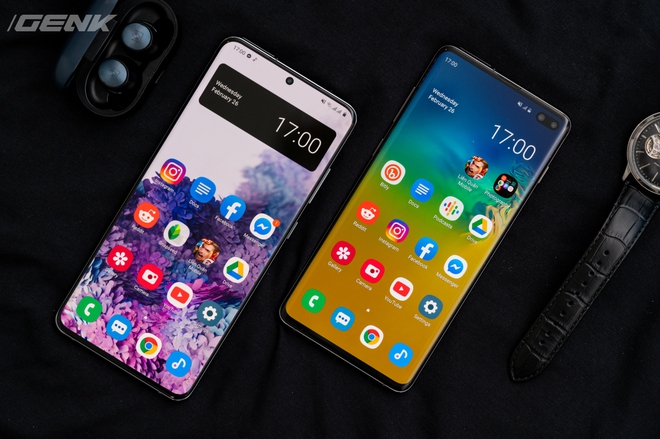
Quad HD + resolution will remain a standard on high-end smartphones
So, after all, smartphones will still have QHD + screens until we have a completely new solution on battery technology on smartphones. At what resolution does the screen usage option allow users to decide for themselves what their smartphone needs? A super sharp quality screen? Or a better battery life?
Reference: Android Authority
Source : Genk
